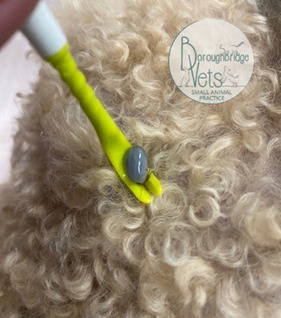Ticks are one of the biggest culprits in spreading blood-borne diseases in this country. Lyme disease is the most commonly spread disease, which can have damaging and long-lasting effects in humans, and in our pets. Untreated Lyme disease common symptoms include fatigue, joint swelling, and fevers. Not all ticks carry Lyme disease, but it is impossible to tell which ones do. It is important to protect your pet by using a prescribed treatment that kills the tick as quickly as possible.
Ticks are often found in wooded and grassland areas and are most prevalent from spring through to autumn, but they can remain active throughout the year. Ticks climb up grass blades and wait for a host to attach to, which could be your pet, or you!
How do I check my pet for ticks?
Ticks feel like a small bump on your pet’s skin. They vary in size depending on whether they have fed. We would advise you thoroughly check your pet after they have been outside, especially in longer grass areas. Ticks are common around the head, neck, ears and feet. But they really can be found anywhere!
What do I do if I find a tick on my pet?
Even if your pet has had tick treatment, it is important you remove any attached ticks to lessen the chance of any disease transmission. If the tick is removed incorrectly, causing stress to the tick, it can increase the chance of disease transmission. Methods such as covering with Vaseline, pulling, cutting or burning them are not advised.
The best way to remove a tick is by using a tick hook which is shown in the picture above.
- Slide the tool between the tick’s body and the skin of your pet, making sure none of the fur is caught in the hook
- Gently turn the tool anti-clockwise until the tick comes away
- Dispose of the tick safely (we suggest wrapping it up in tissue and sealing it over)
If you don’t feel confident removing a tick correctly, feel free to make an appointment with one of our nurses and they will be more than happy to show you how. We also keep tick hooks in stock if you just need to purchase one. Ticks can leave small skin lesions which can take some time to heal-please monitor the area for abnormal swelling or discharge.
How do I protect my pet from ticks?
There are many different treatment options available as spot-ons, tablets or collars. Please make an appointment to see one of our vets to discuss what treatment is most suitable for your pet.
You may want to consider joining our Pet Health Plan. It includes year-round, preventative parasite treatment.
Please see our website for more information.

